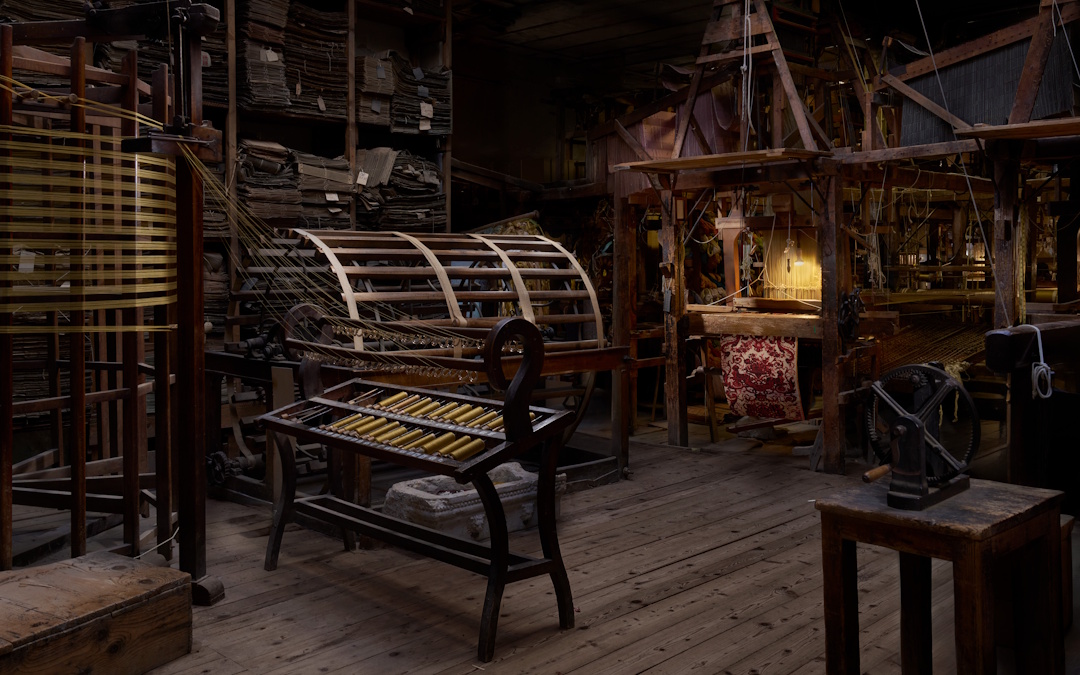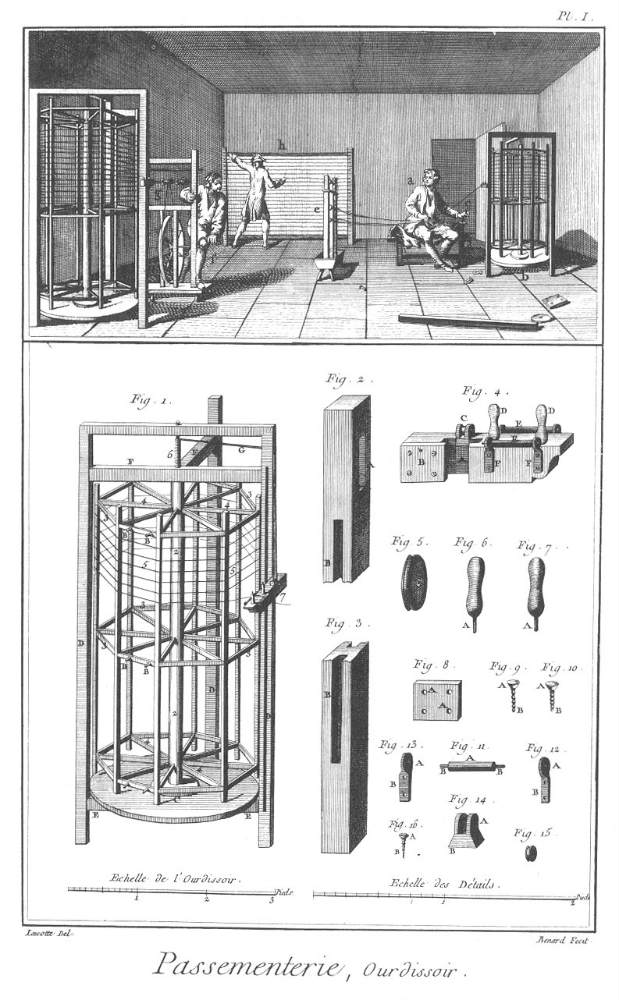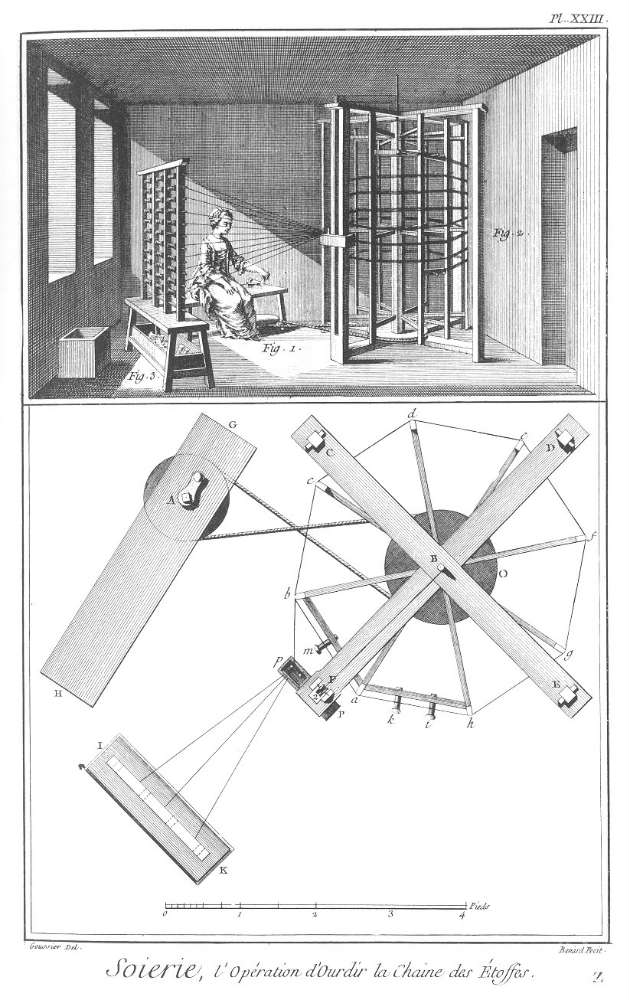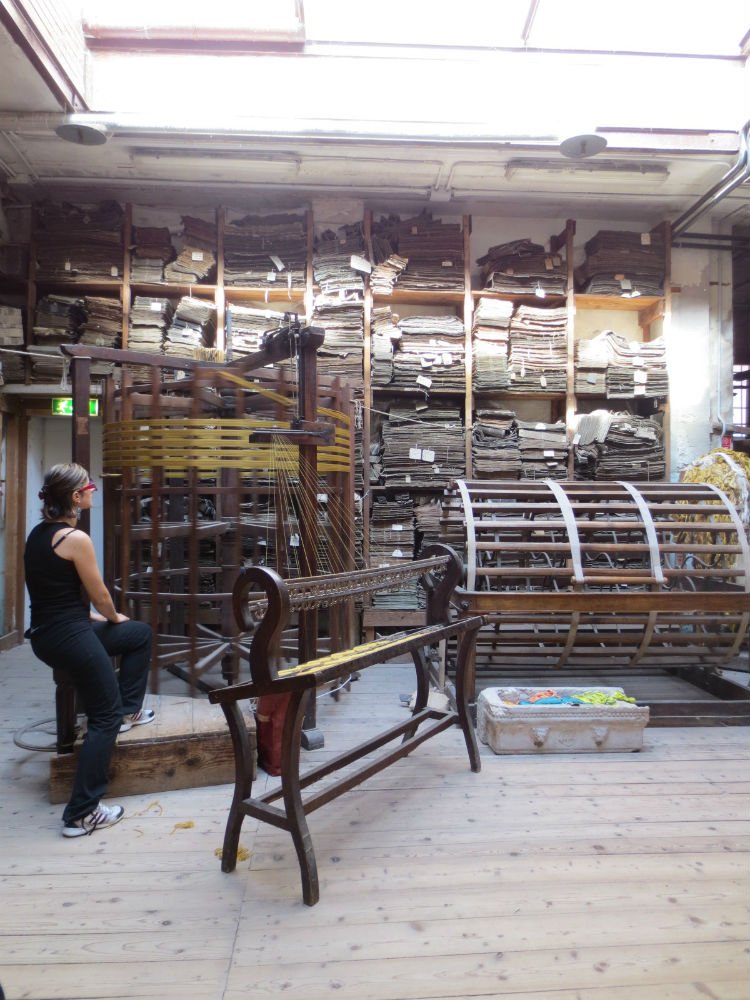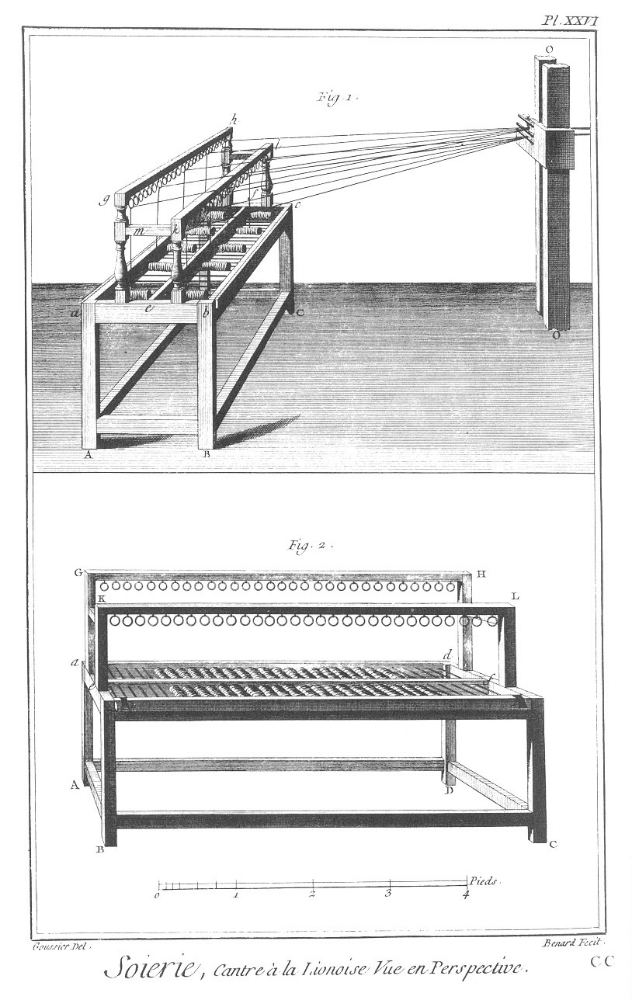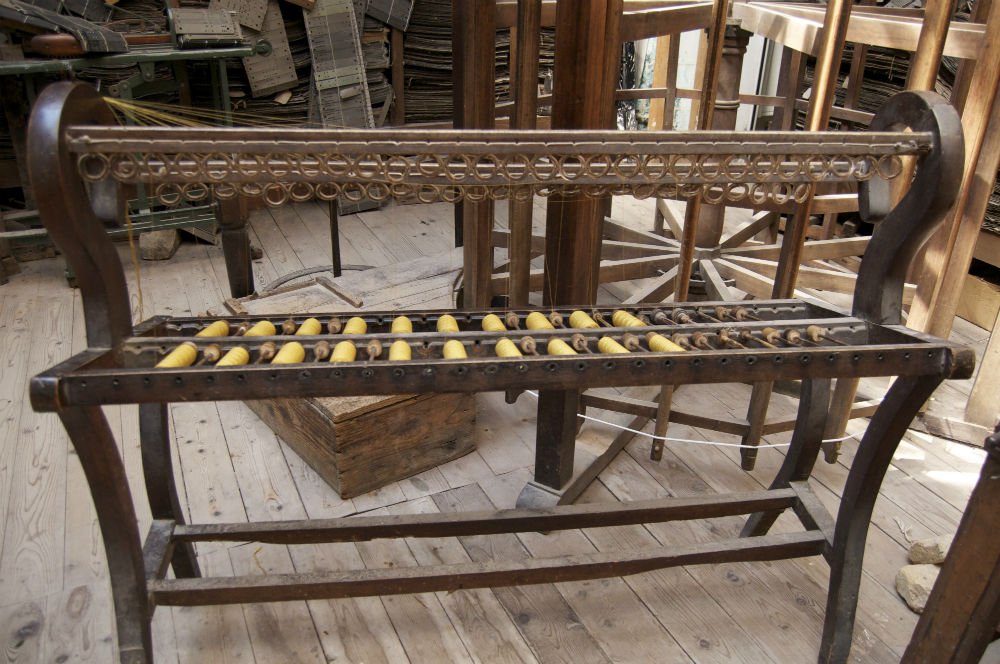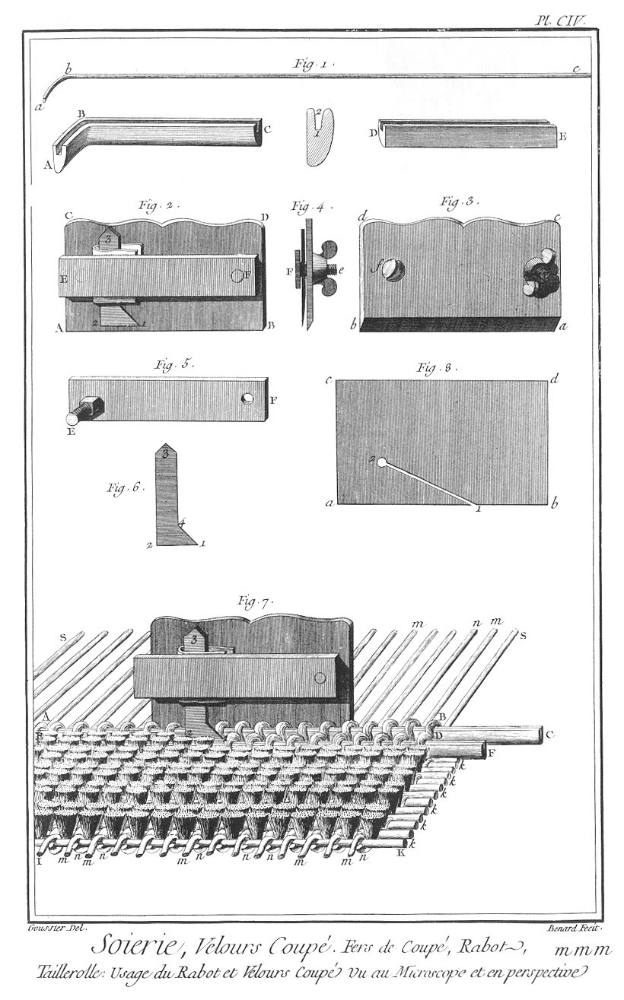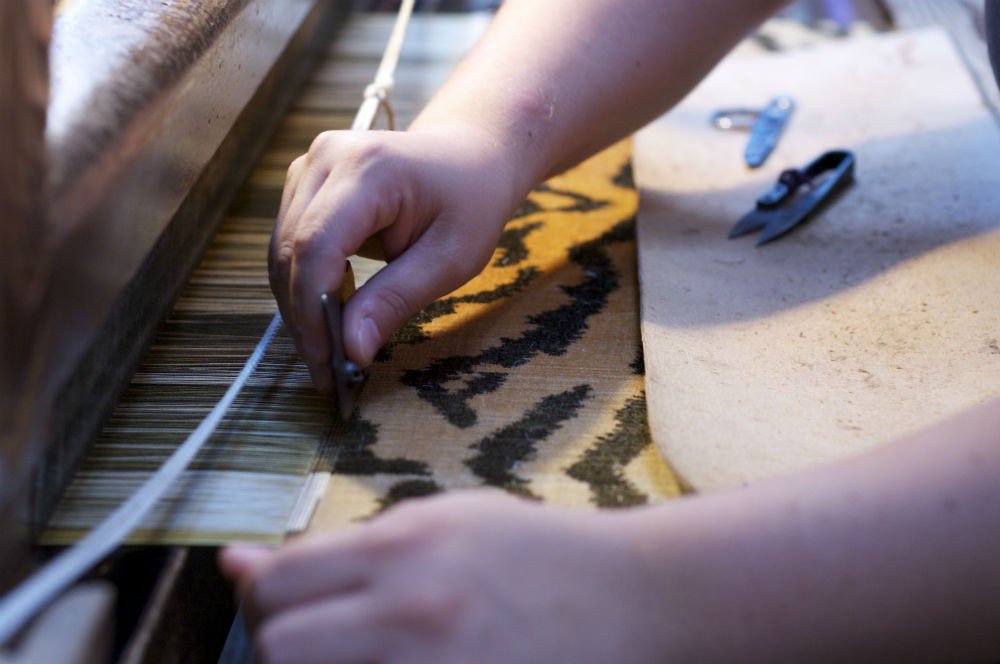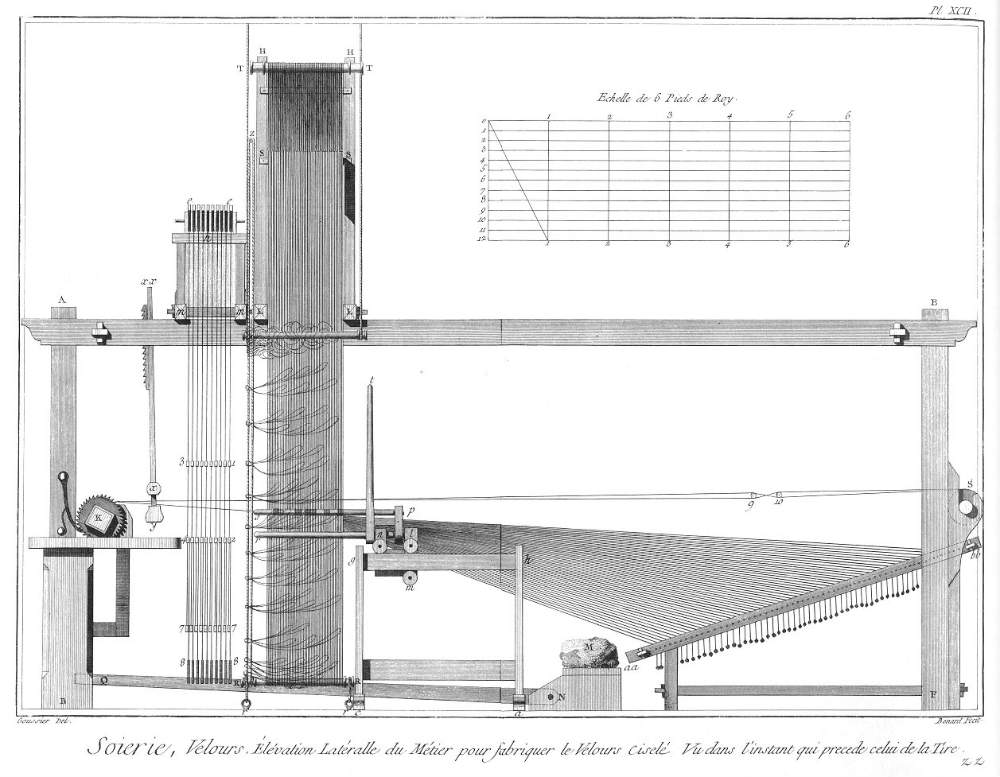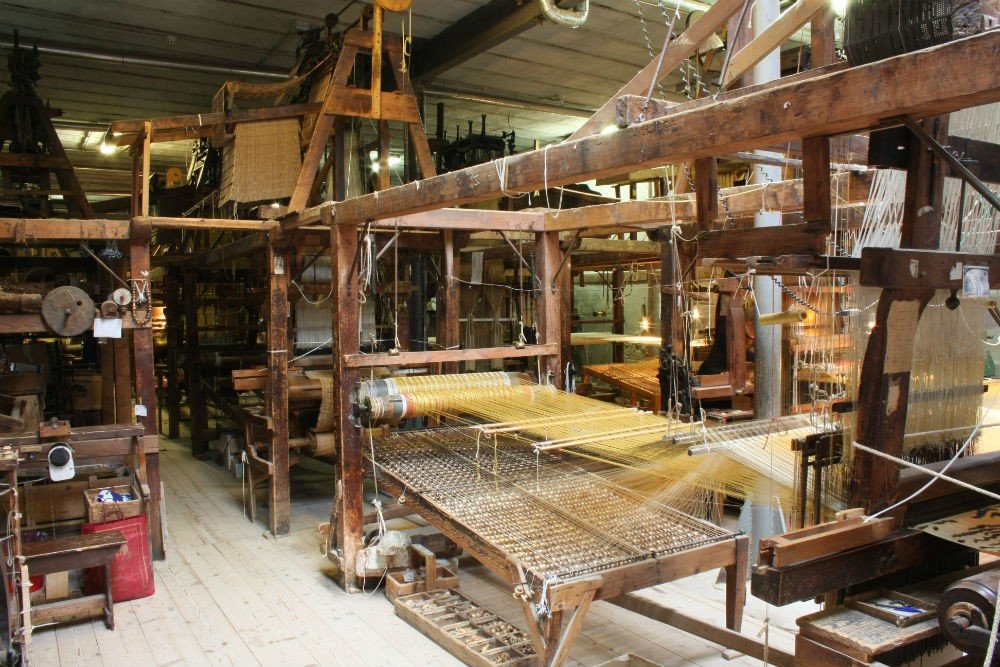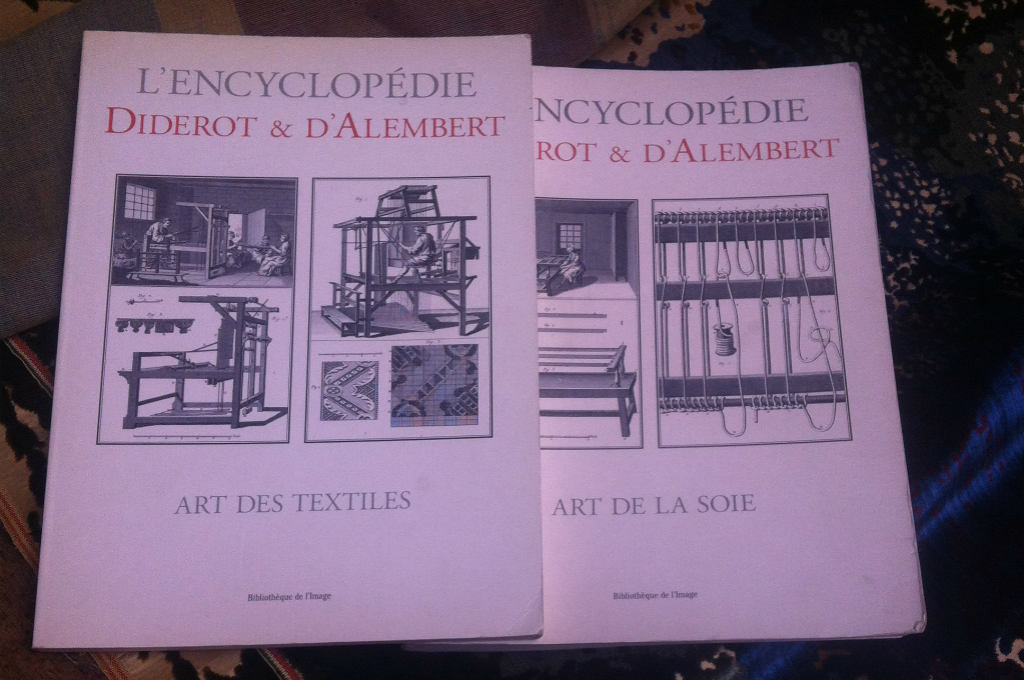The Encyclopédie ou Dictionnaire raisonné des sciences, des arts et des métiers, created by numerous intellectuals including Diderot and D’Alembert, was the first universal collection of knowledge, the first true encyclopedia. This unprecedented 18th-century work aimed to gather and disseminate knowledge across all fields, from the sciences to the arts and crafts. Among its subjects was weaving, making it a valuable historical record of silk fabric production in the pre-industrial modern era.
By examining the illustrated plates that the Encyclopédie devotes to textile manufacturing, we find the very same types of looms that we still use today for the manual production of our velvets.
Historic Looms Used in Silk Fabric Production
The Encyclopédie is often thought of as merely a collection of written texts, but it actually consists of two parts: text volumes and volumes of plates, technical illustrations.
Volume 11 contains detailed drawings of processes, tools, and craft techniques. In particular, it includes a series of illustrations dedicated to trimmings and silk processing, with numbered plates (I, XXIII, XXVI, XCII, and CIV).
These drawings are important because they depict looms, tools, and techniques that can still be seen today in our workshop at 1320 Santa Croce, Venice.
Plates I and XXIII – The Warping Machine and How It Works
Plate I shows a warping machine used to prepare the warp before placing it on the loom. It is a rotating warping machine, like the one in our weaving mill. The thread is wound around pegs in a spiral path to reach the necessary length for the fabric. This process is illustrated in Plate XXIII, which shows a woman warping the thread on the machine.
Plate XXVI – The Cantra: A Preparatory Tool
Plate XXVI depicts a cantra, a machine used in the preparatory phase of weaving. It helps transfer the warp threads to the loom. The spools are arranged in an orderly way, allowing the thread to unroll without tangles or interruptions, thus ensuring a smooth and continuous flow.
Plate CIV – Tools for Cutting Velvet
Plate CIV takes us to the heart of the production process. The images show various tools used to work with velvet: a round iron rod for creating curly velvet, an iron rod with a central groove for cutting chiseled velvet, and parts of the trévette, which is the blade used to cut the pile of the velvet. The lower section of the plate includes a three-dimensional cross-section of cut velvet.
Plate XCII – A Cross-Section of the Loom
Plate XCII shows the most fascinating item in the collection: a side cross-section of a loom, fully detailed. The drawing captures the machine just before the threads are tensioned, that is, before the warp is pulled tight to begin weaving.
For Tessitura Luigi Bevilacqua, Diderot and D’Alembert’s Encyclopédie serves as a vital testimony, offering in-depth and valuable insight into the machines, tools, and techniques of 18th-century art of weaving, particularly silk weaving.
It’s a connection that bridges the 18th century and the present: in its illustrated plates, we see the same looms still in operation in our workshop today, working just as they did back then, preserving a centuries-old tradition.
Cover Photo Credit: Filippo Guerra - Studio Otium

